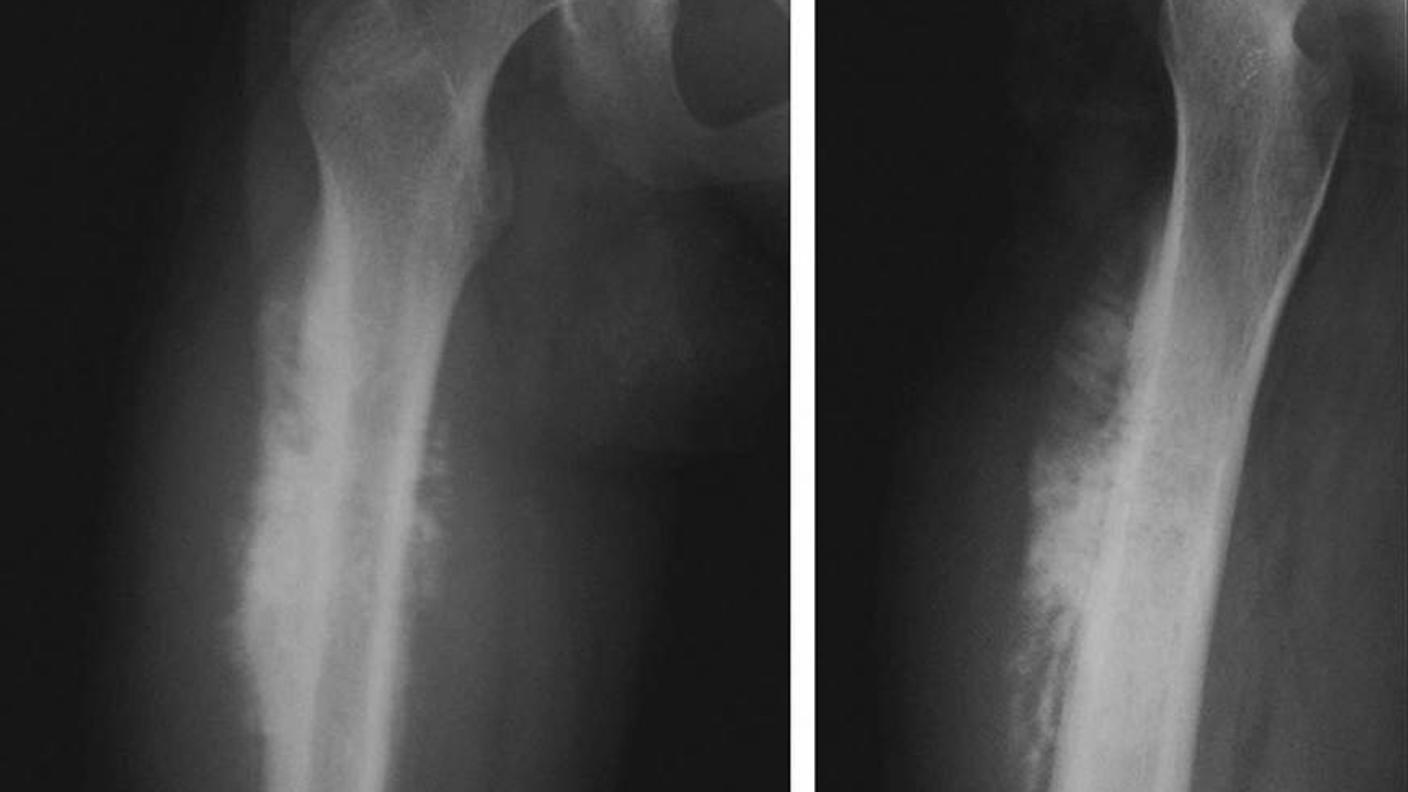Osteosarcoma, the most common primary bone tumor, occurs most frequently in adolescents, but there is a second incidence peak among individuals aged 60 and older. Investigators have published several analyses of cancer registry data from the National Cancer Institute's population-based Surveillance, Epidemiology, and End Results (SEER) Program from U.S. (SEER) and international cancer registries, to characterize the descriptive epidemiology of osteosarcoma.
From NCI/SEER, investigators identified frequency, incidence, and survival rates for 3,482 patients with osteosarcoma diagnosed between 1973 and 2004. They described these cases by age, race, sex, pathology subtype, stage, and anatomic site. There were large differences in incidence and survival rates by age. There was a high percentage of osteosarcoma with Paget disease and osteosarcoma as a second or later cancer among the elderly. Tumor site differences among age groups were noted. Survival rates varied by anatomic site and disease stage, and did not improve significantly from 1984 to 2004. In this comprehensive, population-based description of osteosarcoma, investigators identified important differences in incidence, survival, pathologic subtype, and anatomic site among age groups, and quantified the impact of osteosarcoma in patients with Paget disease or as a second cancer on incidence and mortality rates. These findings may have implications in understanding osteosarcoma biology and epidemiology.
The international patterns of osteosarcoma incidence in children have been described, whereas those for young, middle age or elderly adults have not. Using the Cancer Incidence in Five Continents, International Agency for Cancer Research database, DCEG investigators compared incidence rates for children and adolescents (age 0-24 years), the middle age group (25-59 years) and elderly (> or = 60 years) persons by world regions and individual countries. Overall, worldwide osteosarcoma incidence rates were quite similar in the younger age groups. The greatest variation in incidence rates was observed in the elderly.
Osteosarcoma Study-Related Publications
For more information, contact Lisa Mirabello.
